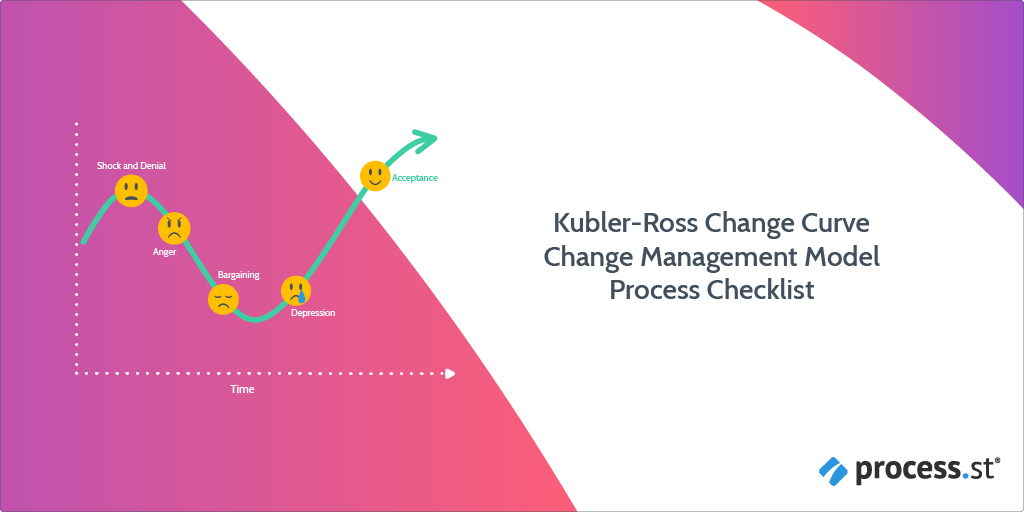Kubler-Ross Change Curve Process Checklists focuses on the emotions an employee will go through during change.
Kubler-Ross Change Curve: An introduction
Teh Kubler-Ross Change Curve was Developed by Elisabeth Kubler-Ross, a psychiatrist who detailed the first five stages of grief in her book On Death and Dying in 1969. The model details the five stages humans go through during grief, which is also reflective of the emotions triggered during change.
The model recognizes that it is the employees who are responsible for carrying out the changes made. You can give them systems to follow and the training to fill in the gaps, but ultimately employee emotions can form a stranglehold on productivity if not managed correctly.
By knowing the five stages of grief, employee reactions can be anticipated, and the appropriate measures put in place well ahead of time. The stages are:
- Denial
- Anger
- Bargaining
- Depression
- Acceptance
People can move through these stages in a random order, they can also jump backward and repeat stages.
What's good about it
The model can anticipate and manage the emotional reactions of an employee and thus their productivity. It accounts for the emotional take on the change process, allowing you to see in advance where the biggest problems could arise.
It's about knowing how your team members will react, and how their reaction could impact the rest of your team.
What's bad about it
Although the model strives to predict an individual's emotions, these emotions are unpredictable at any given time. This can make it difficult to fully manage the team.
There is no method given on how to guide your employees through each stage during change, meaning the steps you take are both down to knowledge and experience.
It must be noted though, what could be an actionable and successful approach to take for the one employee, may not work for another.
How to use this checklist
At the beginning of this checklist, you will be presented with a set of specialized questions given as form fields. You are required to populate each form field with your data.
The checklist is broken down into the 5 stages of the Kubler-Ross Change Curve:
- Stage 1: Denial
- Stage 2: Anger
- Stage 3: Bargaining
- Stage 4: Depression
- Stage 5: Acceptance
At the end of each stage, your supervisor/manager will review your work using Process Street's approvals feature. Other features used in this template include:
- Stop tasks - To ensure task order.
- Dynamic due dates - To make sure your initiative is reviewed on time.
- Role assignment - To delegate tasks within your team ensuring your supervisors are appropriately assigned to the review tasks.
- Approvals - Tasks can be accepted, rejected, and rejected with comments.






